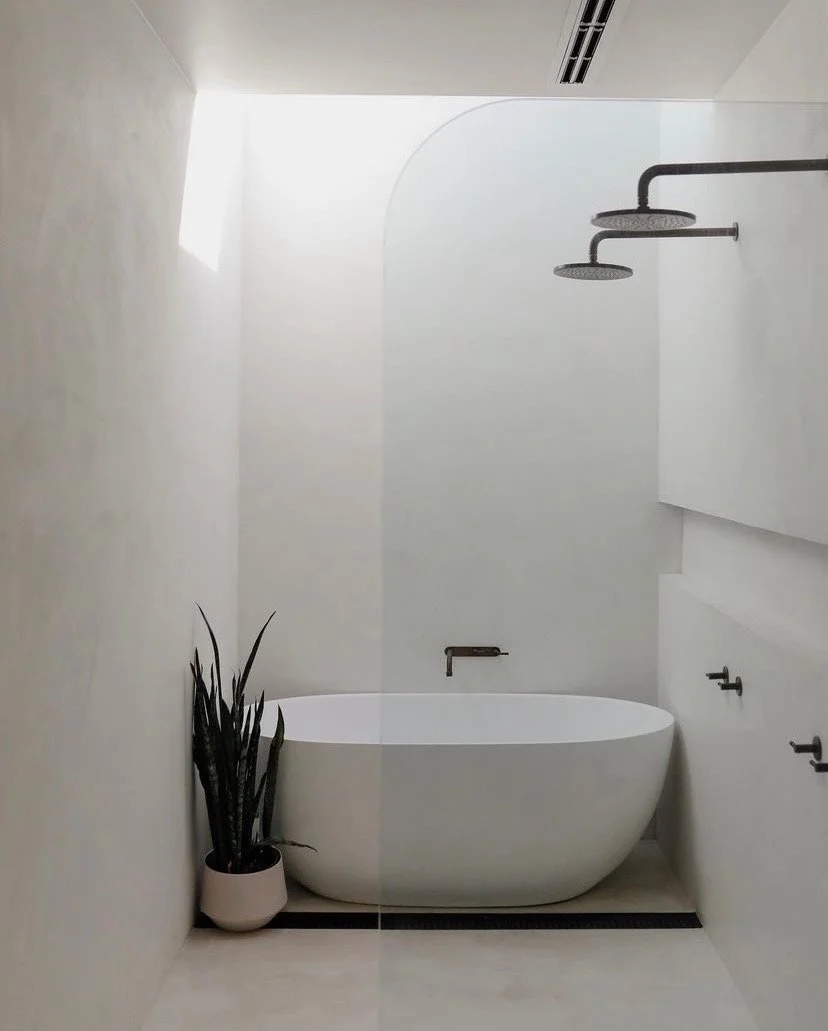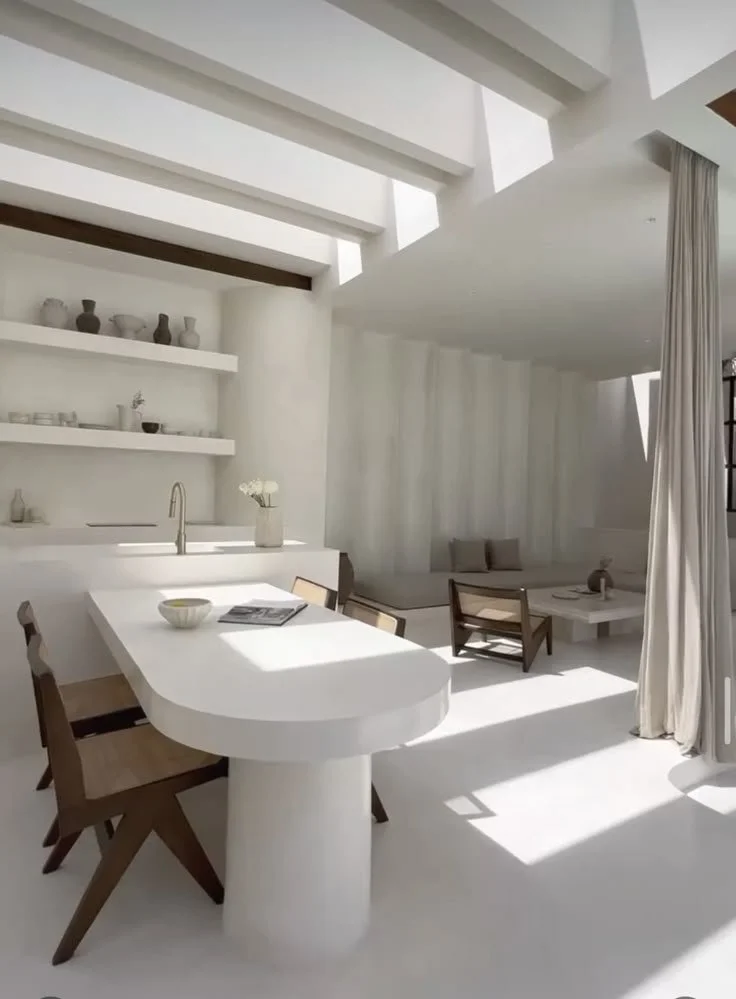Minimalism, Elevated: Why Choose Microcement
In the world of interior design, minimalism is far from a passing trend. Creating calm by eliminating excess, it's a timeless philosophy rooted in simplicity and function. But just because minimalism requires restraint, that doesn’t mean it can’t also be soft, warm, and textural. Designers are embracing materials that bring stillness and unity into a space while creating visual and textural intrigue. Enter seamless microcement surfaces, from floors and walls to custom joinery and even showers. This is minimalism, elevated.
Need a refresher on microcement? A versatile surface render, microcement is a mineral-based coating that’s applied thinly over existing substrate materials to create a beautiful and durable finish without demolishing what’s underneath. It offers multiple texture options inspired by the likes of stone, plaster and concrete.
One of the core principles of minimalism is visual clarity, and nothing delivers this more elegantly than a surface that flows uninterrupted from floor to wall to ceiling. Microcement, being a hand-trowelled finish, creates this sense of continuity. Unlike tiles or timber boards, which segment a surface and create visual noise through grout lines or joins, microcement is applied as a continuous coating that follows the substrate. Whether you're designing a home or a commercial space, microcement is a material that does more with less. It aligns perfectly with core minimalist ideals:
Quietness: Its soft tonal variation adds subtle interest, not by being loud or imposing but by elevating your space with a dimensional, tactile finish.
Functionality: It's extremely strong, waterproof, and versatile — used across high-traffic floors, walls, bathrooms, joinery, and furniture (internally and externally).
Simplicity: As mentioned, a seamless render reduces clutter both visually and physically (due to its minimal weight and height).
With a wide range of colors to choose from, as well as varying levels of texture and visual movement, X-Bond Microcement can be tailored to suit everything from ultra-minimalist spaces to more expressive, layered designs.
Japandi, Scandinavian, Zen: Minimalist Design Schools
Less about starkness and more about comfort, flow, and emotion; today’s minimalism draws influence from design movements like:
Japandi: The fusion of Japanese and Scandinavian aesthetics which values simplicity, natural materials, and imperfect beauty. The irregular hand-trowelled finish of microcement or plaster is a common feature in modern Japandi-inspired spaces.
Scandinavian: Emphasises lightness, practicality, and natural elements. In Scandi spaces, microcement offers a refined alternative to concrete, with a softer appearance and greater design flexibility.
Mediterranean: Modern Mediterranean design celebrates sun-soaked spaces, arched forms, and artisanal materials. Microcement fits beautifully here — its soft texture and warm tonal variations echoing the look of traditional lime plasters, but with the added durability and versatility needed for contemporary life. It’s especially easy to apply across curved walls, wall niches, integrated joinery, and other sculptural features.
In today’s overstimulated world, spaces that promote calm are more valuable than ever. Seamless surfaces create an immersive experience that prioritises mood and wellbeing. By choosing microcement, interior designers are creating spaces that redefine minimalism — from cold, unfeeling, and clinical to textural, warm, and deeply intentional. Helping to lead that shift, X-Bond Microcement offers US designers a tool to balance both form and function, restraint and richness.






